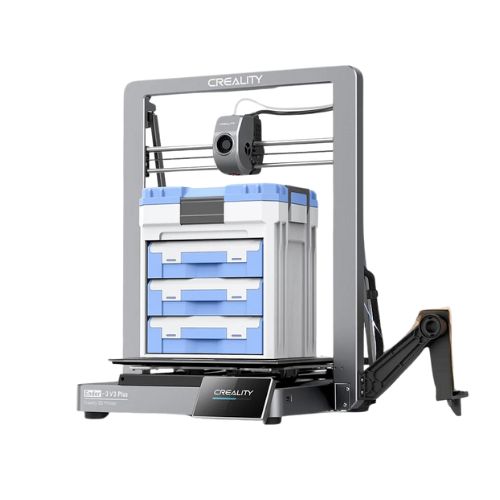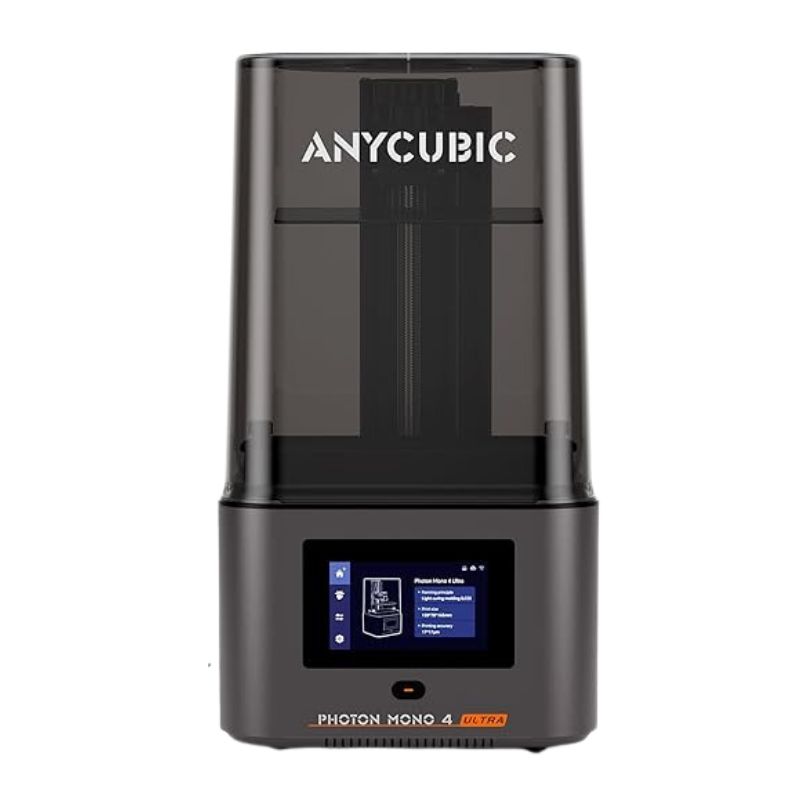Compare Ender 3 V3 Plus vs Photo Mono 4 Ultra
Comparison between the best 3D printers
Choose the best 3D printer at the best price. The cheapest 3D printers are here.
Buy a 3D printer here with 3D Fila.
 |
 |
|
| Model | Ender 3 V3 Plus |
Photo Mono 4 Ultra[BUY Photo Mono 4 Ultra] |
| Printing Material | Filament | Resin |
| Buy Filament for Creality Ender 3 V3 Plus | Buy Resin forAnycubic Photo Mono 4 Ultra | |
| Estimated price | $479,00 | $250,00 |
| Manufacturer | Creality | Anycubic |
| Release Year | 2024 | 2024 |
| Print Volume [mm] | 300x300x330 | 153x87x165 |
| Printer Size [mm] | 410x445x577 | 231x236x430 |
| Weight [kg] | 11,5 | 5 |
| Power Loss Recovery | YES | NO |
| Maximum Resolution [mm] | 0,1 | 0,01 |
| Processor | ||
| Display | Touchscreen 4,3'' | Touchscreen 4.3'' |
| Power Supply | 350 W | |
| Connectivity | Wifi, Bambu bus, Cartão SD | USB |
| Operating systems | Windows, Linux, Macbook | Windows, Mac |
| Date of registration in the system | 2024-05-10 | 2024-12-13 |
| Release date | 2024 | 2024 |
| Extra features | The Ender 3 V3 Plus incorporates significant advancements in 3D printing, featuring a build volume of 300300330mm. It features a Creality operating system based on Klipper, which supports advanced functions such as linear advance and input shaping, and allows precise adjustments through root access or expert mode. The CoreXZ motion system allows a printing speed of up to 600mm/s, with an acceleration of up to 20000mm/s². Equipped with a flexible build plate and a quick-change nozzle with a hardened steel tip, the printer offers simplified maintenance and increased durability. Additionally, the high-speed direct drive technology of the extruder, together with an automatic leveling system and filament end sensors, raise the standard for reliability and efficiency. Compatible with a variety of filaments, including PLA and PETG, the Ender 3 V3 Plus is a robust choice for 3D printing enthusiasts and professionals. | The Anycubic Photon Mono 4 Ultra features 10K resolution (9024x5120) with 17x17um pixels and high light uniformity (>=90%) enabled by the COB system with Fresnel lens and uniformity algorithm. It offers a build volume of 153.4x87x165 mm and speeds up to 120 mm/h with high-performance resin. It includes assisted leveling, built-in Wi-Fi, and a redesigned platform for better adhesion and easy model removal. Additionally, it has a print resumption function after power outages, optimizing time and materials. |
| Support for multiple colors and materials (AMS and CFS) | NO | NO |
Notes * |
||
| Cost-benefit | 8 / 10 | 8 / 10 |
| Hardware | 3.6 / 10 | 6.3 / 10 |
| Tela | . | . |
| Print volume | 4 / 10 | 3 / 10 |
| Performance | 5 / 10 | 9 / 10 |
| [BUY Photo Mono 4 Ultra] |
Conclusion |
| In comparing the Ender 3 V3 Plus and the Anycubic Photon Mono 4 Ultra, both printers present compelling features tailored for different user needs and preferences in the 3D printing landscape. The Ender 3 V3 Plus stands out with its large build volume, robust material compatibility, and impressive speed capabilities, making it ideal for larger projects and diverse filament types. Its advanced features, such as a high-speed direct drive system and automatic leveling, further enhance its usability for both enthusiasts and professionals. However, this printer is positioned at a higher price point, reflecting its vast capabilities and larger form factor. On the other hand, the Anycubic Photon Mono 4 Ultra excels in resolution and print quality, particularly for detailed models where precision is paramount. Its compact design and lower price make it accessible for hobbyists or those starting out in resin printing. While it has a smaller build volume, its efficient use of resin and high-speed printing make it a strong contender for projects where detail and clarity are critical. Ultimately, the choice between these two 3D printers should hinge on the specific needs of the user. Those who prioritize volume and versatility may lean towards the Ender 3 V3 Plus, while users focusing on fine detail and affordability may find the Anycubic Photon Mono 4 Ultra more suitable. Regardless of choice, both printers offer strong performance in their respective categories, providing excellent cost-benefit ratios for their intended applications. |

